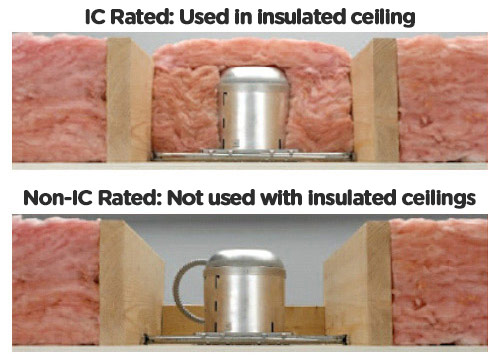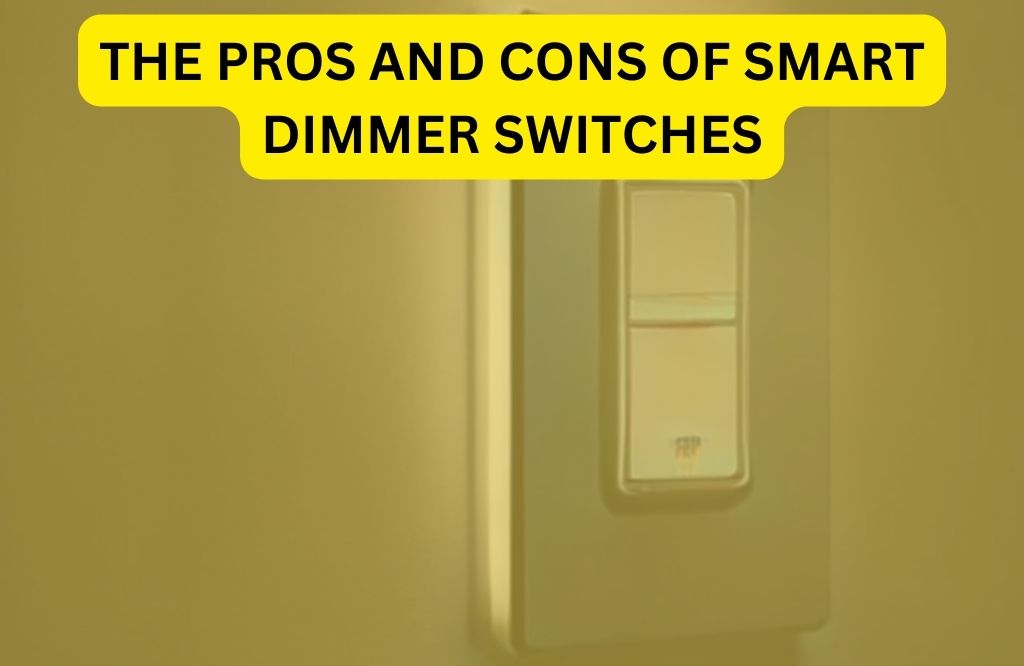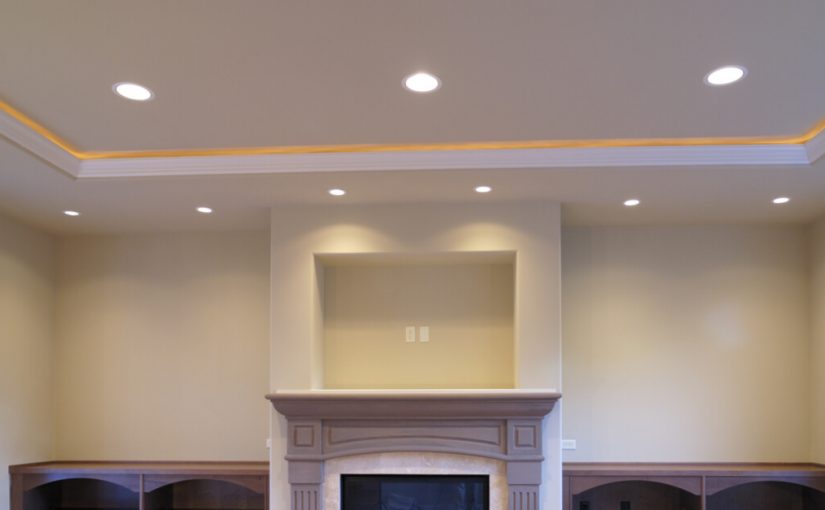Recessed lighting is a popular choice for kitchens, as it provides a sleek and modern look while also offering ample lighting. However, with so many options available, it can be overwhelming to choose the best recessed lighting for your kitchen. But don't worry, we've got you covered! Keep reading for our top tips on choosing the perfect recessed lighting for your kitchen.1. How to Choose the Best Recessed Lighting for Your Kitchen
Installing recessed lighting in your kitchen can seem like a daunting task, but with the right tips and techniques, it can be a breeze. First and foremost, make sure to turn off the power before beginning any installation. Then, determine the layout and placement of your lights, keeping in mind the function and design of your kitchen. It's also important to use the right tools and follow manufacturer instructions for a safe and successful installation.2. Top Tips for Installing Recessed Lighting in Your Kitchen
When it comes to energy efficiency and longevity, LED recessed lighting is the way to go. LED lights use significantly less energy than traditional incandescent lights, saving you money on your energy bill. They also have a much longer lifespan, meaning fewer replacements and maintenance. LED lights also come in various color temperatures, allowing you to choose the perfect lighting for your kitchen's ambiance.3. The Benefits of Using LED Recessed Lighting in Your Kitchen
While installing recessed lighting may seem straightforward, there are some common mistakes that homeowners make that can lead to safety hazards or poor lighting results. Some of these mistakes include not using the correct type of housing for insulation, not following proper spacing guidelines, and not considering the desired beam angle for the lights. To ensure a successful installation, make sure to do your research and consult a professional if needed.4. Common Mistakes to Avoid When Installing Recessed Lighting in Your Kitchen
The placement of your recessed lighting can greatly impact the overall look and functionality of your kitchen. Generally, recessed lights should be placed 18-24 inches from the wall and 3-4 feet apart from each other. However, this can vary depending on the size and layout of your kitchen. For example, in a small kitchen, you may only need a few lights, while in a larger kitchen, you may want to add more for optimal lighting.5. The Best Placement for Recessed Lighting in Your Kitchen
It's essential to calculate the number of recessed lights needed for your kitchen to avoid over or under-lighting the space. The general rule of thumb is to use one light for every 4-6 square feet of space. Keep in mind any other light sources you may have in the kitchen, such as pendant lights or under cabinet lighting, and adjust the number of recessed lights accordingly.6. How to Calculate the Number of Recessed Lights Needed for Your Kitchen
When shopping for recessed lighting, you may come across the terms "IC" and "Non-IC." IC stands for insulation contact and means that the light can be in direct contact with insulation in the ceiling without causing a fire hazard. Non-IC rated lights, on the other hand, must maintain a certain distance from insulation. If you have a ceiling with insulation, make sure to choose IC rated lights to ensure safety.7. The Difference Between IC and Non-IC Rated Recessed Lighting for Kitchens
The size of your recessed lights can also greatly impact the overall look of your kitchen. For standard 8-foot ceilings, 4-inch lights are a popular choice, while 5 or 6-inch lights work well for higher ceilings. Consider the size and layout of your kitchen when choosing the size of your recessed lights, and make sure to keep them consistent throughout the space for a cohesive look.8. How to Choose the Right Size Recessed Lights for Your Kitchen
Adding dimmer switches to your recessed lighting can provide versatility and mood lighting in your kitchen. You can easily adjust the brightness of the lights to fit your needs, whether you're cooking or entertaining. However, there are a few cons to consider as well, such as potential flickering or buzzing with LED lights and the extra cost of the dimmer switch installation.9. The Pros and Cons of Using Dimmer Switches with Recessed Lighting in Your Kitchen
Proper insulation is crucial when it comes to recessed lighting, as it can affect the safety and energy efficiency of your lights. Make sure to use IC rated lights if your ceiling has insulation, and also properly seal any gaps or holes around the lights to prevent air leakage and energy loss. This will not only keep your kitchen well-lit but also save you money on your energy bill. With these top 10 tips in mind, you'll be well on your way to choosing and installing the best recessed lighting for your kitchen. Remember to always follow safety guidelines and consult a professional if needed for a safe and successful installation. Enjoy your new modern and efficient kitchen lighting! 10. The Importance of Properly Insulating Recessed Lights in Your Kitchen
Additional Tips for Choosing the Best Kitchen Recessed Lighting

Consider the Type of Bulb
 When it comes to choosing the right kitchen recessed lighting, it's important to consider the type of bulb you will be using.
LED bulbs
are a popular choice for recessed lighting due to their energy efficiency and long lifespan. They also produce a bright, white light which is perfect for task lighting in the kitchen. However, if you prefer a warmer, more ambient light,
halogen or incandescent bulbs
may be a better option.
When it comes to choosing the right kitchen recessed lighting, it's important to consider the type of bulb you will be using.
LED bulbs
are a popular choice for recessed lighting due to their energy efficiency and long lifespan. They also produce a bright, white light which is perfect for task lighting in the kitchen. However, if you prefer a warmer, more ambient light,
halogen or incandescent bulbs
may be a better option.
Think About the Placement
 Placement is key when it comes to recessed lighting in the kitchen.
Task lighting
should be strategically placed above work areas such as the sink, stove, and countertops.
Accent lighting
can be used to highlight features such as artwork or a statement piece in the kitchen.
Ambient lighting
can be placed in the center of the room or around the perimeter for a softer, overall glow.
Placement is key when it comes to recessed lighting in the kitchen.
Task lighting
should be strategically placed above work areas such as the sink, stove, and countertops.
Accent lighting
can be used to highlight features such as artwork or a statement piece in the kitchen.
Ambient lighting
can be placed in the center of the room or around the perimeter for a softer, overall glow.
Consider Dimmable Options
 Having the ability to dim your kitchen recessed lighting can make a big difference in creating the perfect ambiance for any occasion. Make sure to choose dimmable fixtures and bulbs for your recessed lighting, and consider installing a
smart lighting system
that allows you to control the brightness and color temperature of your lights with a simple voice command or through an app on your phone.
Having the ability to dim your kitchen recessed lighting can make a big difference in creating the perfect ambiance for any occasion. Make sure to choose dimmable fixtures and bulbs for your recessed lighting, and consider installing a
smart lighting system
that allows you to control the brightness and color temperature of your lights with a simple voice command or through an app on your phone.
Don't Forget the Trim
 While the bulb and placement are important, don't overlook the
trim
for your recessed lighting. The trim not only adds a decorative touch to your lights but also helps control the direction of the light. Choose a trim that complements your kitchen's design and consider a
baffle trim
to reduce glare and direct the light downward.
While the bulb and placement are important, don't overlook the
trim
for your recessed lighting. The trim not only adds a decorative touch to your lights but also helps control the direction of the light. Choose a trim that complements your kitchen's design and consider a
baffle trim
to reduce glare and direct the light downward.
Consult a Professional
 When in doubt, it's always best to consult a professional when choosing the best kitchen recessed lighting for your home. They can help you determine the appropriate placement, type of bulb, and trim options based on your kitchen's layout and your lighting needs. They can also ensure that the installation is done safely and correctly.
In conclusion, choosing the best kitchen recessed lighting involves considering various factors such as the type of bulb, placement, dimmable options, trim, and seeking professional advice. By following these tips, you can create a well-lit and functional kitchen that also adds to the overall design of your home. So, don't be afraid to get creative and experiment with different lighting options to find the perfect fit for your kitchen.
When in doubt, it's always best to consult a professional when choosing the best kitchen recessed lighting for your home. They can help you determine the appropriate placement, type of bulb, and trim options based on your kitchen's layout and your lighting needs. They can also ensure that the installation is done safely and correctly.
In conclusion, choosing the best kitchen recessed lighting involves considering various factors such as the type of bulb, placement, dimmable options, trim, and seeking professional advice. By following these tips, you can create a well-lit and functional kitchen that also adds to the overall design of your home. So, don't be afraid to get creative and experiment with different lighting options to find the perfect fit for your kitchen.


































/installing-led-retrofit-bulb-into-ceiling-fixture-184968332-584f033a3df78c491e1876af.jpg)





































































